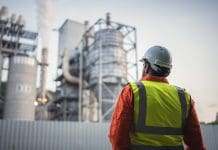Dr Mark Woods, chief strategy officer at the Centre for Modelling & Simulation (CFMS), believes that digital engineering is a crucial tool in compressing development cycles across the construction sector; and highlights how this can be leveraged to support the industry through a turbulent time
Against the challenging backdrop of a shrinking economy, rising energy costs, the ongoing push towards sustainability and targets to meet the UK’s housing demand, new digital engineering technologies are transforming the way we work and live.
With digitalisation, a key driver in harnessing productivity, efficiency and sustainability across multiple industries, advanced technologies are becoming increasingly important for the construction sector as it embraces Modern Methods of Construction (MMC) and strives to overcome the issues it faces.
Increasingly, offsite and modular methods of construction are being viewed as more environmentally and economically efficient ways to manufacture homes, with benefits including increased outputs and reductions in site traffic and, therefore, carbon footprints. However, offsite construction could supercharge its efficiency and mitigate the impact of rising costs for raw materials with the widespread adoption of digital applications.
Tools such as automated design, optimised manufacturing and data-driven operations can meet this need head-on as they all serve to streamline procedures and provide a greater understanding of the through-life performance of a product.
Energy security and sustainability
It is now widely recognised that sustainability is the primary challenge for many industries. Initiatives such as mass electrification of modes of transport are now mainstream, and greener fuels and more efficient processes are in place across many sectors. Construction is no different. With rising energy costs at the forefront of everyone’s minds, the U-value of houses is perhaps of greater importance than ever before, even as we strive towards 2050’s net-zero targets.
However, time is pressing and traditional lifecycles for design and build are no longer viable if targets for carbon neutrality and affordable housing are to be achieved amidst a housing shortage and cost-of-living crisis. This is a crucial time for the industry to understand how it can quickly create new high-performance solutions without impacting on safety, security and reliability.
Working with commercial and research organisations of all sizes, the Centre for Modelling & Simulation (CFMS) is at the forefront of scientific and engineering development. Our experts in model-based engineering, AI, advanced simulation, computing and robotics use state-of-the-art digital technology to challenge the performance of commercially available tools and provide balanced opinions on how to optimise designs and processes, resulting in better productivity and lower costs.
Automating design
Much of the through-life cost of a product and its environmental footprint is determined in the earliest stages of its life – during conceptual design. Outcomes are usually determined by the designer’s experience in order to minimise uncertainty, meaning this process can be heavily influenced by human bias.
Ideally, decision-makers need to evaluate as many construction solutions as feasibly possible, from which stakeholders can select the best option based on other criteria, such as cost, performance, U-value etc. This process of optioneering is vital to creating a more efficient build.
However, budgetary or time constraints often mean this is impossible, leading to less-informed decision-making, rework, delays or cost overruns. Advanced computing can help to automate the activity of multi-objective and multidisciplinary optimisation to generate and assess thousands of potential solutions for a building design prior to the first brick being laid.
Housebuilders can also utilise digital engineering to embed feedback from operations into designs, allowing decision-makers to make better-informed judgements sooner. For example, artificial intelligence (AI) can automate aspects of design, understand how a product is performing against energy and efficiency targets throughout life and enable a more efficient build stage.
Assessing through-life with digital twins
Novel technologies such as digital twins will also allow contractors to better understand and evaluate build and product lifecycle performance requirements. These are fed by data from the real world and can replicate complete buildings, including embedded systems and processes.
Simulation can add a lifetime of knowledge into a relatively simple algorithm, using expert knowledge to learn and provide value. It can help us to understand the root cause and best source of action if a scenario takes us beyond current human knowledge – envisaging unforeseen properties that could emerge throughout the whole life of the building.
By flagging potential issues before they happen, digital twin simulation can support the robust development of homes at a far faster pace while allowing builders to manage increasingly complex sustainability requirements than could be achieved using traditional techniques. This means less downtime and better productivity.
Pushing the boundaries of productivity with digital engineering
The application of digital methods to engineering and construction has been widely cited as a major opportunity to improve productivity – which is key to the government’s drive for growth. The potential to enhance and potentially automate aspects of decision-making is at the heart of this performance gain through the analysis of large volumes of data gathered throughout the lifecycle of the product.
Digital capabilities will enable developers to explore the use of more efficient materials or supply chain processes and assist in balancing the competing environmental, economic and societal factors that feed into a successful sustainable housing ecosystem.
Our experience has shown that those who push the boundaries of digital transformation by automating design, optimising manufacturing processes and moving to data-driven operations will benefit from compressed development cycles – a key component in tackling the housing shortage – and provide the ability to increase the suite of services they can offer.
Dr Mark Woods
Chief strategy officer
Centre for Modelling & Simulation
Tel: +44 (0) 117 906 1100














